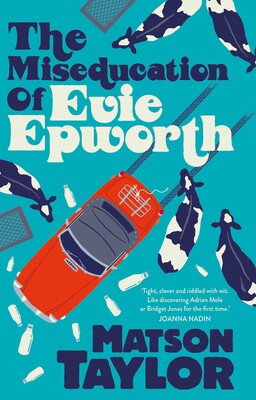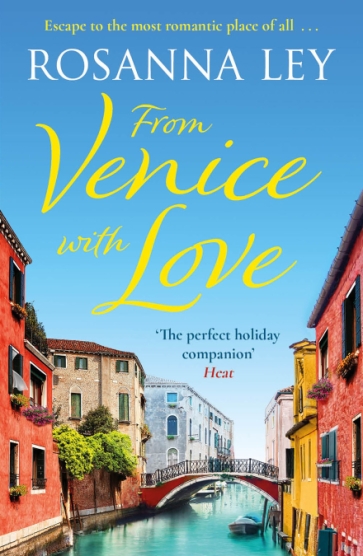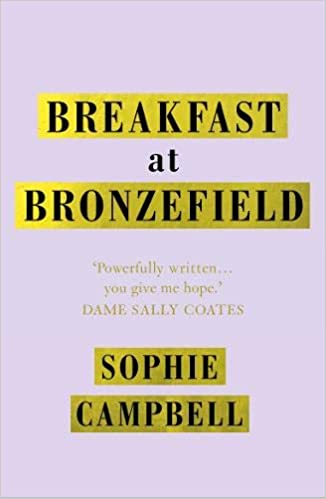
Now, I wasn’t going to read The Miseducation of Evie Epworth yet because I am inundated with books for blog tours. I had invited Matson Taylor to stay in with me to chat about the book instead. However, I thought I’d have a quick look at the first page, got hooked and read the whole book before I knew where I was! Consequently, not only am I staying in with Matson today, but I have a review for you too.
Staying in with Matson Taylor
Welcome to Linda’s Book Bag Matson. Thanks so much for staying in with me. I rather think I know, but which of your books have you brought along to share this evening and why have you chosen it?

I’ve brought along my first novel: The Miseducation of Evie Epworth. It’s my only novel so far but I hope in a couple of years I’ll be bringing along a follow up!
I hope so too. Congratulations on this debut Matson. I’ve just read The Miseducation of Evie Epworth and loved it. I can’t wait to see what happens in her life next.
What can we expect from an evening in with The Miseducation of Evie Epworth?
People have been saying how much the book has made them laugh so I think you can expect to get through quite a few tissues! There’ll be lots of tears of laughter and some tears of sorrow too. I wanted the book to be fun but at the same deal with some quite emotional topics, to have a heart as well as raise a smile.
Evie certainly does all those things Matson. I loved it.
You can also expect to meet some very strong female characters – a product, I think, of my Yorkshire upbringing (we’re taught at a very early age who’s the boss!). And food. You should expect lots of food. It’s everywhere in the book – there are even some recipes…
Oh there are. And those women…
What else have you brought with you and why have you brought it?

Well, I’ve mentioned the food already (which, of course, I’ll bring along – I’m a dab hand at all the recipes now after lots of testing) so I’d like to bring another two things along.

One is a dog… any dog! I love dogs. There are a couple of dogs in the book and I really enjoyed writing about them – one of them, Sadie, is based on a real dog and writing about her brought back some lovely memories. The other thing I’d like to bring along is a book about the sixties – the music, the fashion, the films, the tv shows… The book is set in 1962 in a little village in Yorkshire and you can feel what we understand as the 60s getting stronger as the story unfolds. This was one of the key things I wanted to explore in the book – how the sixties didn’t actually start on January 1st 1960 – there was a strange hinterland for a couple of years where the decade still clung on to the 1950s, at least culturally. I like the idea of exploring how a decade ‘grows up’ and finds its identity (just as when we’re growing up there’s a period between being a child and being an adult – and that’s why Evie is 16 1/2 – she’s bang smack in the middle of that age at which we’re trying to work out our own identity).
I couldn’t agree more, Matson. And being a child of the 60s myself I found the era very evocative. Thanks so much for staying in with me to chat about The Miseducation of Evie Epworth. Before I share my review, let me give blog readers all the details.
The Miseducation of Evie Epworth

July, 1962
Sixteen year-old Evie Epworth stands on the cusp of womanhood. But what kind of a woman will she become?
The fastest milk bottle-delivery girl in East Yorkshire, Evie is tall as a tree and hot as the desert sand. She dreams of an independent life lived under the bright lights of London (or Leeds). The two posters of Adam Faith on her bedroom wall (‘brooding Adam’ and ‘sophisticated Adam’) offer wise counsel about a future beyond rural East Yorkshire. Her role models are Charlotte Bronte, Shirley MacLaine and the Queen. But, before she can decide on a career, she must first deal with the malign presence of her future step-mother, the manipulative and money-grubbing Christine.
If Evie can rescue her bereaved father, Arthur, from Christine’s pink and over-perfumed clutches, and save the farmhouse from being sold off then maybe she can move on with her own life and finally work out exactly who it is she is meant to be.
Moving, inventive and richly comic, The Miseducation of Evie Epworth is the most joyful debut novel of the year and the best thing to have come out of Yorkshire since Wensleydale cheese.
The Miseducation of Evie Epworth will be published by Simon and Schuster imprint Scribner on 23rd July 2020 and is available for pre-order through the links here.
My review of The Miseducation of Evie Epworth
Evie isn’t sure who or what she wants to become.
It was a real joy to meet Evie Epworth and to travel back in time to the 1960s. There’s a wonderful authentic feel of the era that not only creates an enjoyment in reading The Miseducation of Evie Epworth but rekindled so many of my own memories that it added an extra layer of magic – and there is even a touch of real magic in the story. Matson Taylor uses music and fashion, television and a vivid depiction of life in a small Yorkshire village so that it is like stepping aboard a time machine and being transported back in time. I loved the Yorkshireness of the narrative too which comes through brilliant dialogue and attitude, and brings everything from the prosaic to the magical in a blend of humour and emotion. I finished reading The Miseducation of Evie Epworth feeling I had had incredible fun. Very few books make me laugh aloud but this one did frequently and I loved it. I may even have shed a small tear too.
Evie herself is a glorious character. Her exploration of identity is what so many of us will have experienced and can relate to, because her narrative voice rings out from the page. As the book came to a close I was completely satisfied by its resolution for Evie, but simultaneously desperate to know what happens next in her life.
The other characters are an eclectic bunch of vivid and varied personalities. I thought the way Matson Taylor brought in Evie’s mother gave her a real presence and the scenes set in the past add a layer of mystery to the read. However, it is Christine who so ignited my reader response. She is utterly awful. I wanted to climb into the pages of the book and do her physical harm! I think it speaks for the quality of Matson Taylor’s writing that he was able to engender such a response.
Indeed, the writing is brilliant. The structure of the novel, the use of upper case letters in unusual places, the variety of sentence length and naturalistic dialogue, the realistic and often surprisingly poetic description all add up to a fabulous read. I even loved the tiny illustrations. There’s a smashing balance of humour and pathos in The Miseducation of Evie Epworth that makes it all the more effective. I thoroughly enjoyed considering the themes of friendship and enmity, love and dislike, education and practicality and so on that are woven through a thoroughly entertaining story. There’s also a strong moral sense behind the writing too that I felt added a layer of depth I wasn’t expecting. To say more would spoil the plot but this is a book to revel in on many levels!
I loved Matson Taylor’s The Miseducation of Evie Epworth because I believed completely in Evie and her life. I was diverted from the cares of the world and taken back to the era of my youth just brilliantly. It was a real joy to read The Miseducation of Evie Epworth and I cannot recommend it highly enough.
About Matson Taylor

Matson Taylor grew up in Yorkshire (the flat part not the Brontë part). He comes from farming stock and spent an idyllic childhood surrounded by horses, cows, bicycles, and cheap ice-cream. His father, a York City and Halifax Town footballer, has never forgiven him for getting on the school rugby team but not getting anywhere near the school football team.
Matson now lives in London, where he is a design historian and academic writing tutor at the V&A, Imperial College and the Royal College of Art. Previously, he talked his way into various jobs at universities and museums around the world; he has also worked on Camden Market, appeared in an Italian TV commercial and been a pronunciation coach for Catalan opera singers. He gets back to Yorkshire as much as possible, mainly to see family and friends but also to get a reasonably-priced haircut.
He has always loved telling stories and, after writing academically about beaded flapper dresses and World War 2 glow-in-the-dark fascinators, he decided to enrol on the Faber Academy ‘Writing A Novel’ course. The Miseducation of Evie Epworth is his first novel.
For more information, follow Matson on Twitter @matson_taylor_ or visit his website. You’ll also find him on Instagram.




































